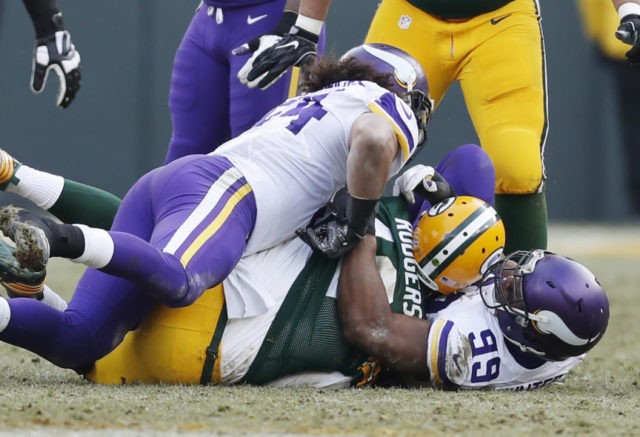New York Jets defensive back called the football field “the perfect place to die.” Green Bay Packers tight end Martellus Bennett countered that anyone willing to die on the field needs to get a life.
“I hope all these young cats that are willing to die for the game of football find a higher purpose in life,” Bennett tweeted. “Look football is great but I ain’t dying for this [expletive]. Lol.”
Football, incessant shotgun-bomb-field-general martial metaphors aside, remains a game. Bennett is right. No one should die for something so trivial.
The good news for both Bennett and Adams is that not only has no player died from a collision in the nearly century-old league but science shows that players who compete in the NFL for a long time tend to live a long time.
The facts, as they often do, go against conventional wisdom. The pervasiveness of this conventional wisdom ironically led to the scientific wisdom that rebutted it. The NFL players’ union, hearing reports in the press of NFL retirees dying young, petitioned the federal government to conduct a mortality study of their profession the way miners or construction workers might to get a bead on workplace safety.
The National Institute of Occupational Safety and Health looked at all 3,439 pension-vested players—ones who competed in five or more seasons—between 1959 and 1988. Their most recent findings, released in 2012, might surprise Bennett, Adams, and the many sports-jock talking heads debating their words.
The government scientists found dramatically lower rates of heart disease, diabetes, respiratory illness, cancer, and other big killers among the retired pros. In 14 of 17 killer categories, the NFL players did better than the comparable peer group. The feds noted a mortality rate of 18 percent among comparable men in society. Just 10 percent of the NFL players died. In other words, football—and the dieting, exercise, discipline, and health care that goes with it—saved the lives of 291 men.
It’s a rough game. Guys undoubtedly leave part of themselves on the field when they leave it. But it’s not Russian roulette–or even skiing, bicycling, or swimming for that matter.
This study’s good news came as bad news to football’s Jeremiahs. USA Today featured it at the time. But other outlets ignored it. “All the news that’s fit to print” for some means “all the news that fits preconceived notions.”
In debates, like football, collisions occur. As gridiron underdogs know, reality often knocks down the narrative on the football field. In the field of journalism, the narrative regularly decleats the facts.

COMMENTS
Please let us know if you're having issues with commenting.